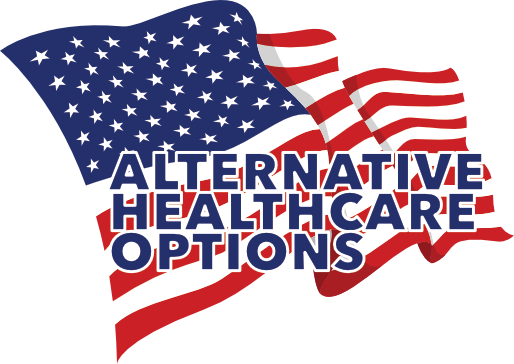A few months ago my neighbor Kyle rang my doorbell looking rattled. His six‑year‑old had broken an arm on the playground, and the ER bill—before the cast, before the follow‑up X‑rays—was already flirting with five figures. Kyle’s family pays nearly $900 a month for a high‑deductible plan, yet they still faced thousands more out of pocket. “There’s got to be an easier way,” he said.
That conversation sent me digging into alternative health care plans—the options that live outside the usual insurance lanes. One name kept popping up in real‑world reviews and Facebook groups: ShareWell. After weeks of calls, number‑crunching, and talking with members, here’s what I learned—and why I switched my own family over in January.
1. ShareWell Isn’t Insurance, and That’s the Point
ShareWell is a nonprofit health share program where members chip in a set amount each month. When someone has a medical bill, the community’s pool covers the cost after that member meets a small personal amount called an IUA—Individual Usage Amount. Think of it like a deductible that never moves the goalposts. For most ShareWell tiers, it’s $1,500 per incident. Pay it once, and the rest is someone else’s math.
Because ShareWell isn’t an insurance carrier, it dodges a lot of the administrative overhead that bloats traditional premiums. Less overhead means lower monthly contributions—often 30 to 60 percent cheaper than comparable bronze or silver ACA plans.
2. Real Numbers, Real Savings
Kyle’s ER saga makes a good case study. Under his old plan, here’s how the broken‑arm bill would have panned out:
- ER facility fee and doctor exam: $2,600
- Imaging and orthopedic consult: $1,200
- Cast, supplies, meds: $800
- Two follow‑up X‑rays: $600
- Total: $5,200
- Kyle owes after deductible and 20 % coinsurance: $2,140
Now swap in ShareWell:
- Same hospital sticker price: $5,200
- Repriced through ShareWell’s bill‑review team: $3,100
- Kyle’s IUA: $1,500
- Community share: $1,600
- Kyle’s savings vs. old plan: $640 on this event alone—and that’s ignoring his lower monthly contribution.
For families juggling sports injuries, asthma meds, and the occasional tonsillectomy, that difference adds up fast.
3. What Gets Shared—and What Doesn’t
ShareWell’s member guidelines read more like plain English than legalese. Here’s the quick version:
- Covered: ER visits, surgeries, hospital stays, maternity, preventive screenings, specialist consults, mental‑health sessions, telemedicine, prescription discounts.
- Shared Upfront: Routine preventive care (annual physicals, well‑child checks) is paid at 100 percent—no IUA, no paperwork.
- Limited or Excluded: Cosmetic procedures, fertility treatments, and conditions that existed before you joined may have waiting periods or caps.
If you can live with those guardrails, the trade‑off is clear cost control and freedom to choose any doctor who will work with transparent pricing.
4. Built‑In Perks You Actually Use
- MightyWell RX Valet: Wildly discounted meds—my wife’s thyroid refill dropped from $48 to $11.
- 24/7 Telehealth: Board‑certified doctors on demand, no copay. Handy when pink‑eye shows up at midnight.
- Patient Advocates: Real humans who chase down rogue hospital bills, negotiate prices, and book imaging at facilities that won’t bankrupt you.
- Smart Care Centers: In many cities, ShareWell partners with clinics that bundle labs, primary care, and physical therapy under one roof for one transparent price.
These extras are why ShareWell routinely lands on “best family health share plans” lists in 2025.
5. Who Benefits Most?
- Self‑Employed & Freelancers: Tired of marketplace sticker shock? ShareWell is one of the most affordable health care options for self‑employed people I’ve seen.
- Small Businesses: Skip the 15 % renewal hikes and offer employees a plan that actually fits the budget—without losing ACA compliance (pair ShareWell with a Minimum Essential Coverage wrapper and you’re good).
- Healthy Families: If you mostly hit the doctor for check‑ups and the odd ear infection, ShareWell’s low contributions and preventive perks are hard to beat.
- Early Retirees & Digital Nomads: Portable coverage, open provider choice, and U.S. nationwide sharing make this a solid fit.
6. Common Questions I Get
“Is ShareWell legit?”
Yes. It’s a 501(c)(3) nonprofit with audited financials and a decades‑long track record—no fly‑by‑night here.
“Will doctors take it?”
Most do. You simply ask for cash pricing or self‑pay rates, then submit invoices for sharing. The bill‑review team often negotiates even lower numbers.
“What about catastrophic events?”
After your IUA, expenses are shared up to $1 million per incident. There’s also optional stop‑loss coverage for true worst‑case scenarios.
7. Using ShareWell in the Real World
Preventive care: My family’s annual check‑ups were paid in full—no forms, just a receipt.
Specialist visit: Our teenager saw a dermatologist for acne; we paid $1,500 IUA, community covered the rest.
Prescriptions: Generic antibiotic for strep cost $6 with MightyWell RX.
Telehealth: I got a sinus infection diagnosis in pajama pants—took 15 minutes.
Every interaction felt…normal. No 45‑minute hold music. No “claim denied due to coding error” letters.
8. Keywords You’ll See All Over Google in 2025
“health share programs 2025,” “alternative health care plans,” “affordable health care for self‑employed,” “ACA‑compliant health share,” and “sharewell reviews.” If you’re researching, sprinkle these terms into your queries and watch how many firsthand stories pop up.
9. Is ShareWell Right for You?
Ask yourself:
- Do I want to lower my health‑care spend by 30 % or more?
- Am I comfortable paying a predictable IUA when big stuff hits?
- Do I value picking the doctor and hospital that feel right for my family?
- Would on‑call bill negotiators make my life less stressful?
If you’re nodding along, ShareWell deserves a spot on your shortlist.
10. The Bottom Line
Traditional insurance has become a game of higher premiums, higher deductibles, and fewer answers. ShareWell flips that script, handing control back to members and proving you can cut costs without cutting care. Kyle’s family made the switch last month. When the next playground mishap happens—and let’s be honest, it will—he won’t be staring down another five‑grand lesson.
If you’re ready to ditch the bloated bills and join a community that has your back, ShareWell might be the smartest money move you make in 2025.

